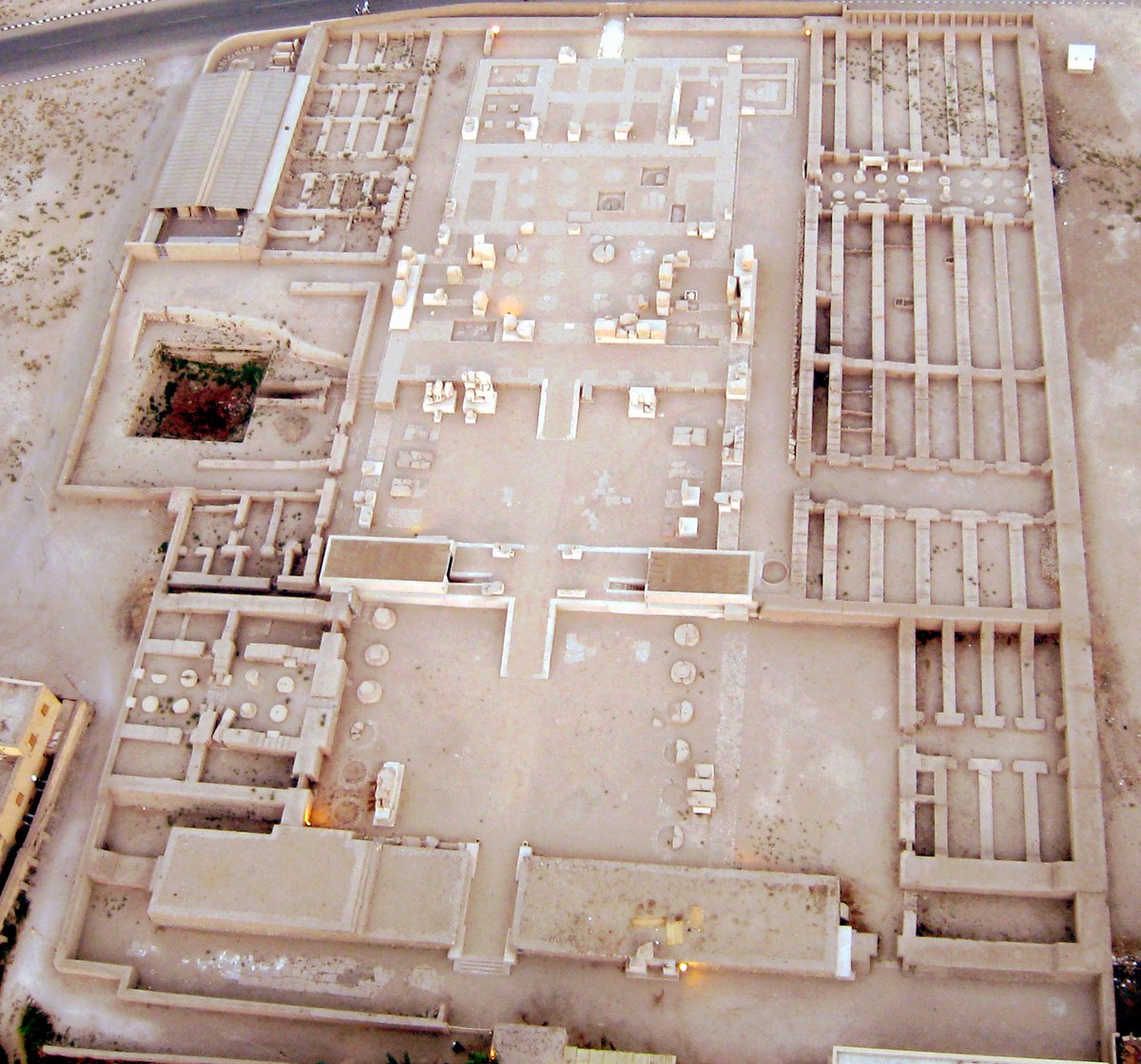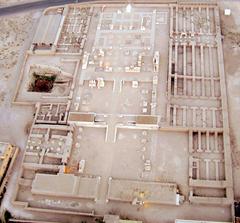
Mortuary Temple of Merenptah Visiting Hours, Tickets, and Travel Guide in Luxor, Egypt
Date: 15/06/2025
Introduction
The Mortuary Temple of Merenptah, located on Luxor’s West Bank, stands as a remarkable testament to the artistry, religious devotion, and political legacy of Egypt’s 19th Dynasty. Commissioned by Pharaoh Merenptah, the thirteenth son and successor of Ramesses II, this site is renowned not only for its architectural heritage but also for housing the famous Victory Stele—an artifact of profound historical significance thanks to its mention of “Israel” outside biblical texts (exploreluxor.org; egypt-museum.com; historyofinformation.com). Despite centuries of damage from flooding and stone quarrying, ongoing excavations have revealed a wealth of artifacts, colorful reliefs, and structural remains that illuminate the temple’s role in New Kingdom funerary and religious traditions (landioustravel.com; egypttourpackages.com).
This comprehensive guide outlines the historical context, architectural highlights, visitor information, travel tips, and frequently asked questions to help you plan an enriching visit to the Mortuary Temple of Merenptah and surrounding Luxor historical sites (sailingstonetravel.com; egypttrippers.com).
Table of Contents
- Introduction
- Historical Context
- Visitor Information
- Architectural and Archaeological Highlights
- Frequently Asked Questions (FAQ)
- Conclusion
- References
Historical Context
The 19th Dynasty and Merenptah’s Reign
Merenptah (reigned c. 1213–1203 BCE) rose to power in a period of external threats and internal consolidation. As Ramesses II’s thirteenth son, he inherited a legacy of monumental construction. The temple’s location on the west bank of Thebes (Luxor) places it among other significant mortuary temples, including those of Ramesses II and Hatshepsut (exploreluxor.org; egypt-museum.com).
Purpose and Function
Serving as a “House of Millions of Years,” the temple was both a funerary monument and a center for ongoing religious rituals performed by priests to ensure the king’s eternal life. Its layout facilitated offerings, festivals, and the daily cult of the deceased pharaoh (exploreluxor.org).
Construction and Architectural Features
Merenptah’s temple, while smaller than his father’s Ramesseum, followed similar design principles: grand pylons, columned courts, hypostyle halls, and sanctuaries. Materials were often repurposed from earlier monuments, notably Amenhotep III’s nearby temple, reflecting both reverence for tradition and practical considerations (landioustravel.com).
Religious and Political Significance
The temple’s reliefs and statuary emphasized Merenptah’s divine right to rule and his victories over foreign adversaries, especially the Libyans and Sea Peoples. The site also played a role in Theban religious festivals, forming part of the sacred landscape of the west bank (localguidetoegypt.com).
Archaeological Discoveries: The Victory Stele
In 1896, Flinders Petrie discovered the famous Victory Stele (Merneptah Stele) within the ruins. This black granite monument, now in Cairo’s Egyptian Museum, records Merenptah’s military successes and includes the earliest known mention of “Israel” (historyofinformation.com; egypt-museum.com).
Decline and Later History
Flooding, stone quarrying, and centuries of neglect left the temple in ruins. However, modern excavations and restoration work, particularly by the Swiss Institute of Archaeology, have stabilized much of the remaining structure and uncovered numerous artifacts.
The Temple in Luxor’s Sacred Landscape
Strategically positioned near the Ramesseum, Medinet Habu, and the Valley of the Kings, the Mortuary Temple of Merenptah is integral to the west bank’s royal necropolis and religious complex (localguidetoegypt.com).
Visitor Information
Visiting Hours
- Standard hours: 6:00 AM – 5:00 PM daily
- Museum hours: 8:00 AM – 5:00 PM
- Best time to visit: Early morning or late afternoon for cooler temperatures and fewer crowds
Note: Hours may vary seasonally or for maintenance; check locally before arrival.
Tickets and Entrance Fees
- General admission: ~100–140 EGP for foreign visitors
- Discounts: Reduced rates for students and Egyptian nationals
- Passes: The Luxor Pass includes this site and is ideal for multi-site visits (sailingstonetravel.com).
- Purchase: Tickets available on-site or at main West Bank ticket offices; included in some tour packages.
How to Visit and Accessibility
- Location: West Bank, north of the Antiquities Inspectorate, near the Marsam Hotel (exploreluxor.org).
- Transport: Accessible by taxi, car, bike, or organized tour; limited public transit.
- Accessibility: Terrain is generally flat but uneven in places; the museum is wheelchair accessible, but assistance may be needed on temple grounds.
- Facilities: Basic restrooms available; refreshments nearby but not within the temple. Bring water and sun protection.
Tours and Guided Experiences
- Guided tours: Highly recommended for historical context; can be booked onsite or through local operators.
- Combined itineraries: Many tours include the Ramesseum, Valley of the Kings, and other Luxor historical sites (happyegypt.com).
Nearby Attractions
- Ramesseum: Ramesses II’s mortuary temple, just south.
- Temple of Amenhotep III: Directly behind the site.
- Valley of the Kings: A short drive north; includes Merenptah’s tomb (KV8).
- Howard Carter House: Museum dedicated to the discoverer of Tutankhamun’s tomb (egyptbestvacations.com).
Site Facilities
- On-site museum: Exhibits include polychrome reliefs, sphinxes, statues, and informative panels (egypttourpackages.com).
- Restrooms: Available near entrance and at nearby hotels.
- Accessibility: Museum is accessible; temple ruins may be challenging for visitors with mobility issues.
Practical Tips
- Best season: October–April for cooler weather.
- What to bring: Water, snacks, sun protection, comfortable shoes, camera.
- Etiquette: Do not climb on ancient ruins; tip staff if assistance is provided.
- Photography: Permitted throughout, but flash is restricted in sensitive areas.
Architectural and Archaeological Highlights
Layout and Structural Design
- Forecourt and Pylons: Grand entrance courts flanked by columns; original pylons lost to flooding.
- Hypostyle Halls: Two large halls, now mostly ruined.
- Osiride Pillars: Statues and pillars representing the king in the guise of Osiris.
- Columned Halls and Sanctuary: Successive halls leading to the sanctuary; sun altar incorporated.
- Sacred Lake: Small pool symbolizing primordial waters.
- Enclosure Wall: Mudbrick perimeter defining the temple precinct (landioustravel.com).
Material Reuse
Merenptah reused blocks, statues, and reliefs from Amenhotep III’s and other earlier temples. This practice both honored the past and addressed economic constraints (landioustravel.com).
The Modern Museum
A dedicated museum beside the ruins houses colorful reliefs, statuary, and detailed information on the temple’s construction and restoration (egypttourpackages.com).
Restoration Efforts
Ongoing work by the Swiss Institute of Archaeology and Supreme Council of Antiquities has stabilized and partially reconstructed the temple, allowing for safe and informative visits (landioustravel.com).
Frequently Asked Questions (FAQ)
Q: What are the Mortuary Temple of Merenptah’s visiting hours?
A: Generally 6:00 AM – 5:00 PM daily; museum from 8:00 AM.
Q: How much are tickets?
A: Typically 100–140 EGP for foreign visitors; discounts available.
Q: Is the site accessible for people with disabilities?
A: The museum is wheelchair accessible; temple ruins have uneven terrain.
Q: Are guided tours available?
A: Yes, both on-site and through tour operators; highly recommended.
Q: Can I take photographs?
A: Photography is allowed, but flash is restricted in some areas.
Q: What attractions are nearby?
A: The Ramesseum, Temple of Amenhotep III, Valley of the Kings, and Howard Carter House.
Summary and Final Tips
The Mortuary Temple of Merenptah offers visitors a profound encounter with Egypt’s New Kingdom history, reflected in its monumental architecture, vibrant reliefs, and world-renowned Victory Stele (localguidetoegypt.com; landioustravel.com). Its location in Luxor’s sacred west bank, alongside other iconic sites, makes it a must-see for history enthusiasts. Plan your visit by checking opening hours, securing tickets, and considering a guided tour for deeper insight. Always bring water, sun protection, and respect the fragile remains. For the latest updates, multimedia resources, and travel tips download the Audiala app or follow dedicated Egypt travel channels.































































